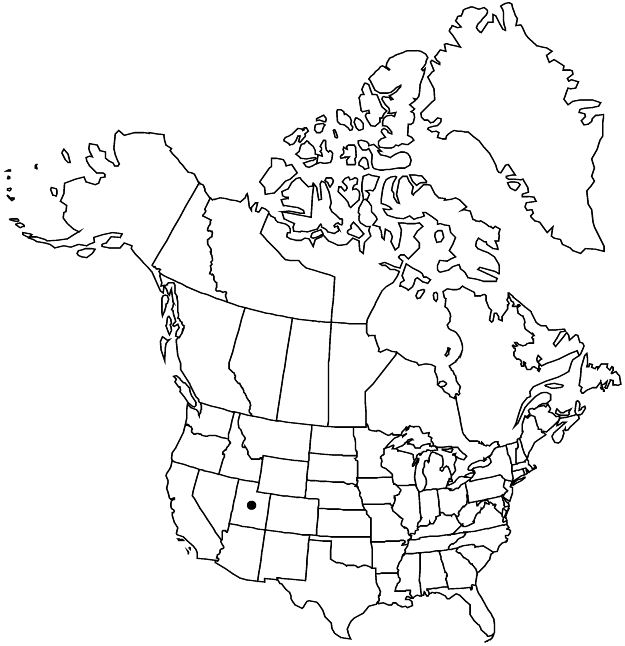Difference between revisions of "Drymocallis micropetala"
in N. L. Britton et al., N. Amer. Fl. 22: 375. 1908.
FNA>Volume Importer |
FNA>Volume Importer |
||
| Line 16: | Line 16: | ||
|name=Drymocallis glandulosa subsp. micropetala | |name=Drymocallis glandulosa subsp. micropetala | ||
|authority=(Rydberg) Soják | |authority=(Rydberg) Soják | ||
| − | }}{{Treatment/ID/Synonym | + | }} {{Treatment/ID/Synonym |
|name=Potentilla glandulosa subsp. micropetala | |name=Potentilla glandulosa subsp. micropetala | ||
|authority=(Rydberg) D. D. Keck | |authority=(Rydberg) D. D. Keck | ||
| − | }}{{Treatment/ID/Synonym | + | }} {{Treatment/ID/Synonym |
|name=P. glandulosa var. micropetala | |name=P. glandulosa var. micropetala | ||
|authority=(Rydberg) S. L. Welsh & B. C. Johnston | |authority=(Rydberg) S. L. Welsh & B. C. Johnston | ||
| Line 37: | Line 37: | ||
|elevation=1400–2600 m | |elevation=1400–2600 m | ||
|distribution=Utah. | |distribution=Utah. | ||
| − | |discussion=<p>Drymocallis micropetala is poorly known; it combines the aspect and narrow inflorescence of D. convallaria, the small petals of D. glandulosa, and the predominantly short-hairy pedicels of D. deseretica. Plants with equally small petals that occur sporadically throughout the range of D. convallaria are predominantly septate-glandular rather than short-hairy on the petioles and are not included here. As circumscribed here, D. micropetala occurs only in the Wasatch Range of north-central Utah, from Juab to Rich counties; it is possibly of conservation concern.</p> | + | |discussion=<p><i>Drymocallis micropetala</i> is poorly known; it combines the aspect and narrow inflorescence of <i>D. convallaria</i>, the small petals of <i>D. glandulosa</i>, and the predominantly short-hairy pedicels of <i>D. deseretica</i>. Plants with equally small petals that occur sporadically throughout the range of <i>D. convallaria</i> are predominantly septate-glandular rather than short-hairy on the petioles and are not included here. As circumscribed here, <i>D. micropetala</i> occurs only in the Wasatch Range of north-central Utah, from Juab to Rich counties; it is possibly of conservation concern.</p> |
|tables= | |tables= | ||
|references= | |references= | ||
| Line 61: | Line 61: | ||
|publication year=1908 | |publication year=1908 | ||
|special status=Endemic | |special status=Endemic | ||
| − | |source xml=https://jpend@bitbucket.org/aafc-mbb/fna-data-curation.git/src/ | + | |source xml=https://jpend@bitbucket.org/aafc-mbb/fna-data-curation.git/src/8f726806613d60c220dc4493de13607dd3150896/coarse_grained_fna_xml/V9/V9_459.xml |
|subfamily=Rosaceae subfam. Rosoideae | |subfamily=Rosaceae subfam. Rosoideae | ||
|tribe=Rosaceae tribe Potentilleae | |tribe=Rosaceae tribe Potentilleae | ||
Revision as of 18:17, 18 September 2019
Caudex branches short to elongate. Stems solitary or ± tufted, (2.5–)3–6 dm; base 2–4 mm diam., septate-glandular. Leaves moderately hairy; basal (6–)10–24 cm, leaflet pairs 2–3; terminal leaflet obovate, 2–5 × 1.5–4 cm, teeth double, (5–)8–12(–15) per side, apex obtuse; cauline 1–3, well developed, leaflet pairs 2–3. Inflorescences 10–20(–30)-flowered, leafy, congested clusters terminating branches, 1/10–1/3(–1/2) of stem, narrow, branch angles 5–20°. Pedicels 1–5 mm, predominantly short-hairy, often velutinous, sparsely to moderately septate-glandular. Flowers opening widely; epicalyx bractlets linear to oblanceolate-elliptic, 2–4(–6) × (0.5–)1–1.5 mm; sepals spreading, 4–7(–9) mm, apex obtuse; petals not overlapping, spreading, cream-white, obovate-elliptic, 2–5 × 1.5–3.5 mm, shorter than sepals; filaments 1–2 mm, anthers 0.5–0.8 mm; styles thickened, 1 mm. Achenes reddish, 1.3 mm.
Phenology: Flowering May–Jul.
Habitat: Mountain brush in canyons, pinyon-juniper woodlands
Elevation: 1400–2600 m
Discussion
Drymocallis micropetala is poorly known; it combines the aspect and narrow inflorescence of D. convallaria, the small petals of D. glandulosa, and the predominantly short-hairy pedicels of D. deseretica. Plants with equally small petals that occur sporadically throughout the range of D. convallaria are predominantly septate-glandular rather than short-hairy on the petioles and are not included here. As circumscribed here, D. micropetala occurs only in the Wasatch Range of north-central Utah, from Juab to Rich counties; it is possibly of conservation concern.
Selected References
None.
